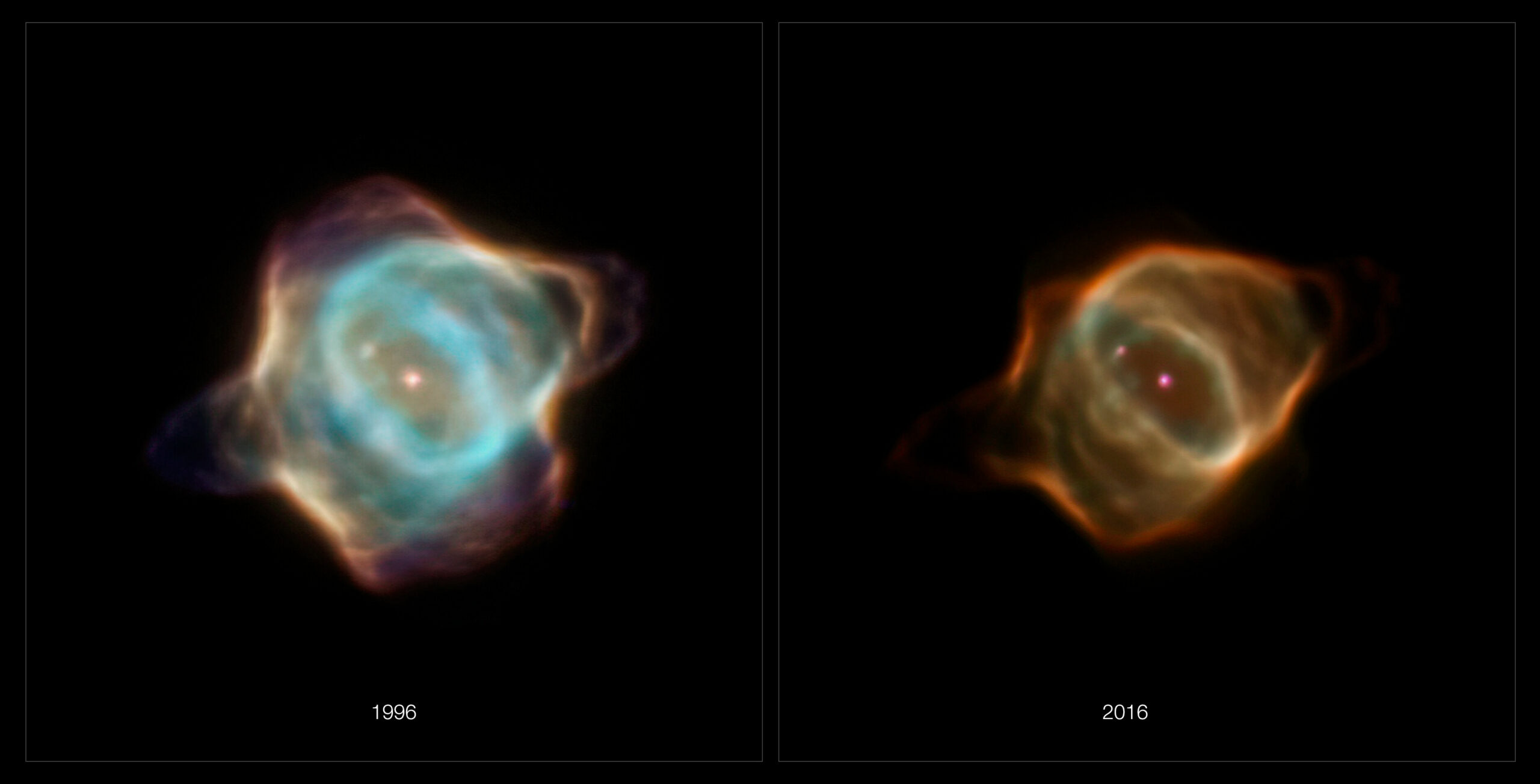When the fog dissolves
In winter the fog sometimes does not dissolve the whole day. In space, planetary nebulae usually exist for many millennia, because they are star shells that have been ejected by their stars at the end of their lifetime.
In the case of the Stingray Nebula, which was first catalogued in 1976 and is located 18,000 light years from Earth, this seems to be an exception. Images of the system taken by the Hubble Space Telescope in 2016 show a nebula that has drastically lost brightness and changed shape compared to Hubble images from 1996. Light blue gas shells near the center of the nebula have all but disappeared, and the wavy edges that gave this nebula its aquatic name have practically disappeared.
Astronomers also noticed unprecedented changes in the light spectrum of the glowing gases (nitrogen, hydrogen and oxygen), which were blasted off as envelope elements from the dying star in the center of the nebula. Especially the brightness of the oxygen emission decreased by a factor of almost 1000.
“In most studies, the nebula usually becomes larger over time,” says Bruce Balick from the University of Washington, USA, who led the project. “Here it changes its shape fundamentally and becomes weaker, and this in an unprecedented time frame”. The reason for this is probably hidden in the properties of the dying star at the center of the Stingray Nebula, which affects the structure and brightness of the nebula. However, the researchers can only speculate about this so far.
A 2016 study by Nicole Reindl of the University of Leicester, UK, and an international team of researchers, also using Hubble data, found that the star at the center of the Stingray Nebula, SAO 244567, is special in itself. Observations from 1971 to 2002 showed that the star’s temperature is almost ten times as high as the surface of our Sun. Reindl suspects that the temperature jump was caused by a brief helium fusion flash that occurred outside the core of the central star. Afterwards the star began to cool down again and returned to its previous stage of stellar evolution.
